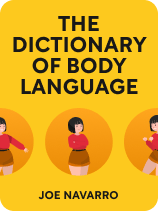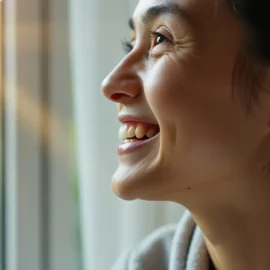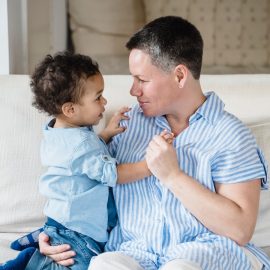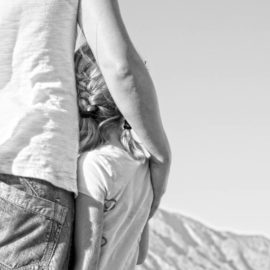

This article is an excerpt from the Shortform book guide to "The Dictionary of Body Language" by Joe Navarro. Shortform has the world's best summaries and analyses of books you should be reading.
Like this article? Sign up for a free trial here.
How can you tell if someone is genuinely excited to see you? What excited body language behavior is also a tai chi move?
We all exhibit subtle physical behaviors that put our emotions on display to those who are skilled in interpreting body language. Joe Navarro teaches these skills in his book The Dictionary of Body Language.
Read more to learn what Navarro has to say about behaviors that point to excitement.
Excited Body Language
Navarro describes several cues that indicate excitement. These often involve springy, energetic, upward movements. (Shortform note: The springy movement of excited body language may come from our need to prevent emotional overwhelm. The feeling of excitement usually comes from a surge of the feel-good neurochemical dopamine, which can be pleasurable and energizing. However, it can also be intense enough to feel overwhelming, so we move around to release some of the energy that comes with it.)
The following are two examples of excited body language.
Action #1: Rapidly Raising and Lowering the Eyebrows
Navarro notes that when greeting friends and family, people often quickly raise and lower their eyebrows in a single movement. The movement happens in less than a second. This signifies that someone’s happy and excited to see the person they’re greeting.
(Shortform note: Psychologists, sociologists, and ethologists have studied this cue—nicknamed the “eyebrow flash” because of its rapid movement—for many years. Their findings suggest that it’s a nonverbal signal that ubiquitously signals warmth, comfort, and excitement across the world. Most famously, one 1970s ethologist identified this nonverbal cue in more than a dozen areas, including Japan, Samoa, Papua, France, South America, and Africa.)
Action #2: Being Springy on the Feet
Sometimes, when someone’s excited, they’ll spring up and down on their feet. According to Navarro, you’ll most often observe this behavior in children, but adults also do it occasionally.
(Shortform note: Springing up and down on your feet can be more than just a natural reaction to excitement—it’s also a tai chi move. One tai chi expert calls this move the “two-year-old bounce” because of its resemblance to young children’s springy movements. Its purpose is to help you feel the springiness of your body, loosen and lubricate your joints, and enhance the elasticity of the ligaments that connect them. To perform this move, relax your body and tune into all of your joints—your ankles, knees, hips, and so on. Then, gently bounce up and down (don’t push yourself up too powerfully), feeling the motion in these joints.)

———End of Preview———
Like what you just read? Read the rest of the world's best book summary and analysis of Joe Navarro's "The Dictionary of Body Language" at Shortform.
Here's what you'll find in our full The Dictionary of Body Language summary:
- A former FBI Special Agent's guide to body language
- Why you should assess body language cues collectively, not individually
- The body language cues that indicate stress, boredom, anger, doubt, and more






